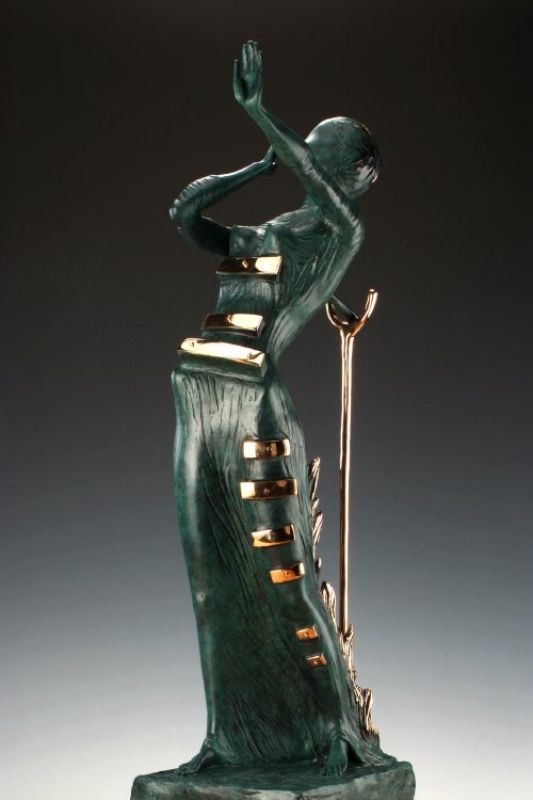Dali
CSS 176-Woman Aflame
Bronze, 84 cm
Chat with us on WhatsApp
About the artwork
The Dalí bronze sculpture Woman Aflame, perfectly encapsulates Dalí’s exploration of three-dimensional form and it effectively demonstrates the core characteristics of Surrealism. Woman Aflame (1980) is a significant work, having a prominent place in Dalí’s sculpture repertoire. The inextinguishable flames represent a burning passion, perhaps that of latent female desire. For Dalí, it is well documented that Drawers symbolize memory and the unconsciousness. They express the mystery of hidden secrets, of which according to Dalí , women possessed. Dalí was influenced by the psychoanalyst Sigmund Freud, and in this sculpture the drawers illustrate the hidden sensuality of the female and the mysteries that the female body contains. Dalí’s attitude towards the art form of sculpture was both scientific and metamorphic, which can be seen in a paragraph from his biography “The Secret Life of Salvador Dalí”: He approached form almost scientifically and his sculptures were a result of much hard work and intellectual ponderings. The Woman Aflame sculpture recalls the 1937 painting The Burning Giraffe created before his 8 year exile to the United States during the 1940s. The painting shows his personal struggle with the chaos of World War II; the images therein can be traced back to Sigmund Freud's psychoanalytical method, much admired by Dalí.
About the artist
Born on May 11, 1904, in Figueres, Spain, Salvador Dalí’s
eccentric nature and talent for self-promotion made him the most famous
representative of the surrealist movement and one of the most widely recognised
artists in the world. Identified as an artistic prodigy from a tender age, Dalí attended the drawing school at the Colegio de Hermanos Maristas and the
Instituto in Figueres, Spain in 1916. In 1922, he enrolled in the Academia de
San Fernando in Madrid and received recognition during his first solo show
held in Barcelona in 1925. Dalí became internationally known after the third
annual Carnegie International Exhibition in Pittsburgh in 1928 and grew to
immense notoriety and fame. Today, his sculptures and paintings are exhibited
in the most prestigious museums in the world and part of many coveted private
and public collections.
Go to Dali's profile ›


